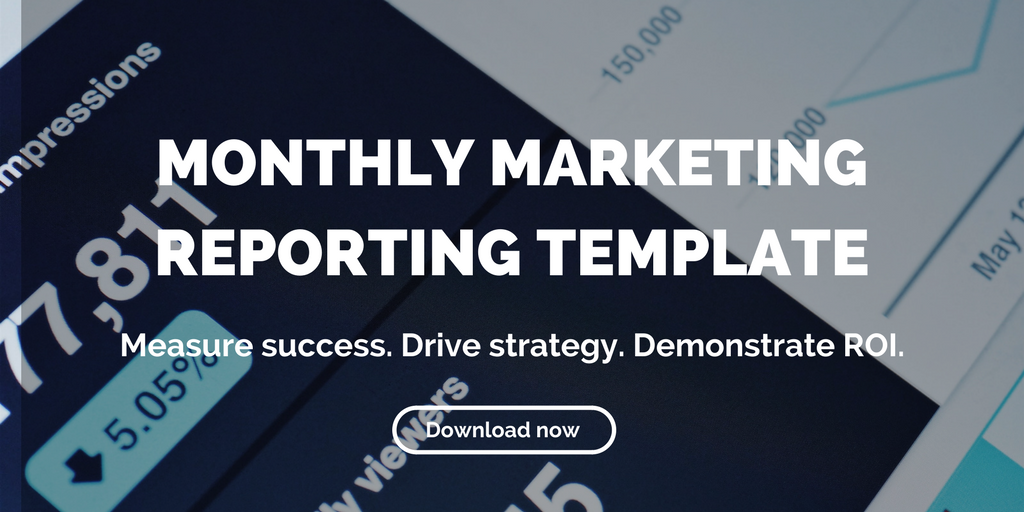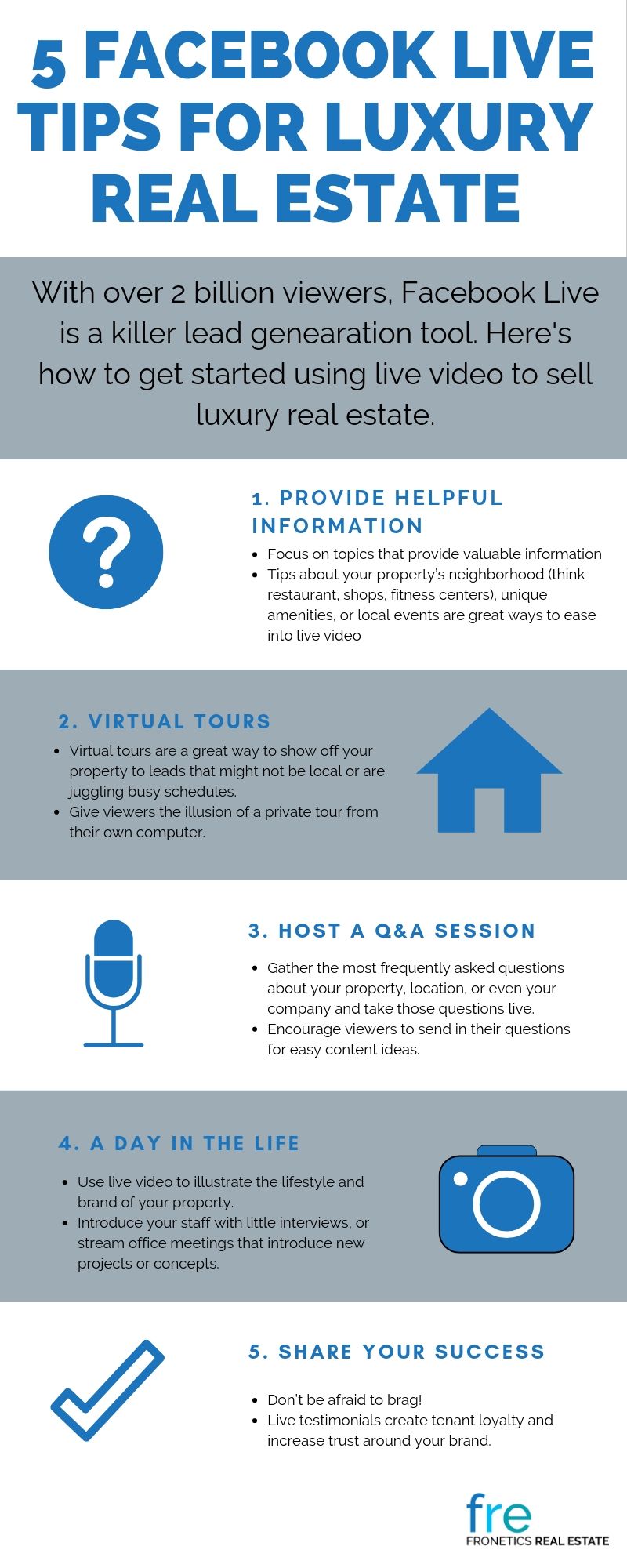Archive for the "Blog" Category

The Sweet Spot of Advertising: Microtargeting and Real Estate
With microtargeting, you can personalize the messaging to ensure it reaches the right audience, in the right place, at the right time.
In an age when customers are increasingly empowered to select how, when, and where to view content, deluging them with off-target ads that do not meet their needs is a waste of effort. Cue microtargeting. With microtargeting, you can personalize the messaging and ensure it reaches just the right audience.
What is microtargeting?
Also known as micro-niche targeting, microtargeting is a marketing technique that relies on consumer data and demographics to identify the interests of specific people. That information is then used to influence their actions and spur their interest in a company’s products or services. The primary goal is to understand the target audience and deliver marketing messages to them through their preferred communication channels.
Real estate and microtargeting
By using collated data, microtargeting helps real estate firms get the right message, in front of the right audience, at the right time. For example, when advertising a property, the right audience would not be high school students, so targeting them is a waste of time. With microtargeting, real estate firms can segment their potential customers based on, for example, age, income range, and family size. Who can afford your property? Does it appeal to empty nesters, families, or young professionals? Now, you can decide who you should target and deliver a personalized, valuable message based on what you know about your customer base.
Microtargeting with geolocation and geo-fencing
Another feature of micro-targeting is the ability to share the right message — in the right place: geomarketing. A marketing strategy built on geomarketing draws on geographic information for successful delivery. Combined with other market segments, it can effectively help you reach the audience that matters to your business. There are two types of geomarketing:
- Geolocation is data about device location. A device´s location is captured by an IP address, GPS, Bluetooth, and Wi-Fi. Geolocation marketing reaches its full potential when paired with consumer behavior. This way, real estate firms can tailor messages to people in a particular location based on their preferences. For example, data collected may show people from a specific area prefer certain types of buildings. Armed with this information, you can design a geolocation campaign that appeals to and reaches those same people.
- Geofencing is dependent on a person’s mobility — like stepping into a new area. Unlike geolocation, geofencing lets you fire a message when a new person crosses a predefined, virtual perimeter. Geofencing helps real estate firms send a “right here, right now” message. For example, the ad may announce the presence of a real estate sales center and accompanying offers. Again, you’ve reached a person with potential interest in buying or renting in the area.
In summary, microtargeting ensures you get the most out of your marketing efforts.
Related posts:
- Using Messaging Platforms for Real Estate to Deliver Content
- Good Real Estate Marketing Gets Personal
- Social Media Trends for 2018 Real Estate Marketers Need to Know
Archive for the "Blog" Category

DIY Digital Marketing Strategy for Real Estate in Four Easy Steps
Looking to create a DIY digital marketing strategy for your real estate brand? Get started with these four steps.
Highlights:
- A digital marketing strategy is your clear path to targeting, reaching, and engaging with potential buyers.
- You have to know who your ideal buyer or renter is before you can begin crafting content that is informative, educational, and even entertaining to your target audience.
- Let your planning pay off by distributing valuable, effective content that your readers want to see
You know you need to have a digital marketing strategy for your property but getting started can be challenging. Where do you begin? Even the language around digital marketing can be intimidating to newcomers.
A solid digital marketing strategy is the foundation for reaching target buyers (or renters). Before you start writing blogs and making videos, you need to set goals. A digital marketing strategy is your clear path to targeting, reaching, and engaging with potential buyers.
Here are four steps to creating a successful DIY digital marketing strategy.
Steps to building a DIY digital marketing strategy for real estate
1) Who is your buyer?
Trying to write interesting and engaging content for an unidentified audience is nearly impossible. You have to know who your ideal buyer or renter is before you can begin crafting content that is informative, educational, and even entertaining to your target audience. First of all, nail down the details about your buyer personas to make that personal connection: What are their interests? Where do they gather information? How much money do they make? What drives their decision–making?
2) What is your goal?
What do you plan to accomplish with your digital marketing efforts? The answer should define your content goals and become a crucial part of your business goals.
Our real estate clients often focus on converting contacts/leads to sales, growing website traffic, and increasing revenue. Include both short and long-term goals and refer back to these goals to make sure you’re sticking to your strategy.
3) Distribute, distribute, distribute
Identified your audience? Check. Defined your goals? Check. Next: select the best platforms for distributing your content to get your property in front of the right potential buyers and tenants.
Social media is a digital playground for marketers but knowing where to post is just as important as knowing what to post. You’ll need to identify what platforms your target buyers are using and how to reach them on those platforms.
4) Get to work
Once you have created your buyer personas, identified your goals, and decided on the best platforms for your target audience, the fun begins: getting your content in front of potential buyers. Let your planning pay off by distributing valuable, effective content that your readers want to see.
Remember to think of your strategy like a body of water, ebbing and flowing. Your digital marketing strategy should be fluid and adjusted as needed. If your property features multiple units, change your messaging to reflect and highlight that variety (for example, a penthouse unit).
Final word of advice: keep up with changing buyer behavior, stay on top of new features on social platforms, and refine your strategy along the way.
Related posts:
- Infographic: Content Marketing Statistics Every Real Estate Marketer Should Know
- How to Use Guest Posting as Part of Your Content Strategy
- 10 Quick Ways to Grow Brand Awareness
Archive for the "Blog" Category

Wellness Amenities are the Biggest Trend in Luxury Real Estate
The latest trend in luxury real estate focuses on peace and tranquility. Here’s why wellness amenities, like meditation gardens and yoga decks, are growing in popularity.
Highlights:
- Modern luxury residents are trending away from the traditional flashy displays of wealth, and toward the peace and tranquility of wellness amenities.
- Luxury condo residents are just as likely to look for meditation gardens and yoga studios as gyms and on-site spas.
- Lush plantings, meditation studios, and sky-lit seating areas attract residents and require very little maintenance because of their simple, inherent beauty.
When most people think about luxury real estate, extravagance comes to mind: car elevators, helicopter pads, two-story gyms, and fine–dining restaurants inside glassy residential towers. However, modern luxury residents are trending in a different direction, away from the traditional flashy displays of wealth, and toward the peace and tranquility of wellness amenities.
The Rise of Luxury Wellness Amenities
Personal wellness is a cultural trend on the rise. Now, that focus on the soul-body-mind connection has also reached luxury residential communities across both the United States and the globe. While private theaters and state–of–the–art lobbies are still a big part of the equation, we are seeing increased demand for amenities that promote tranquility.
These days, luxury condo residents are just as likely to look for meditation gardens and yoga studios as gyms and on-site spas. They treat peace of mind as a precious commodity — and luxury residential communities have been racing to adapt to the change.
Some of the biggest names in luxury real estate are leading the way:
Providing Tranquility and Communion with Nature
In Hallandale Beach, Fla., 2000 Ocean has created a tranquility garden where residents can take a walk or relax in their very own lemon tree grove. At 1030 Kings in West Hollywood, an outdoor yoga deck has been constructed to offer a breathtaking place to breathe and unwind. And, in New York City, One Manhattan Square recently opened one of the largest private parks in the city, reserved exclusively for residents and their guests.
Using the Space You Have to Create Luxury Wellness
An interesting aspect of this new trend is that buildings don’t necessarily need access to large outdoor areas. You may not have an expansive courtyard or an open lot nearby to transform into a tranquility park. Or, perhaps, your outdoor areas are already dedicated to family-friendly amenities like a dog park or playground. The good news is you can use existing space to include wellness amenities — although not every community has the resources to go as far as Gramercy Square in Manhattan.
Gramercy Square has forgone the idea of the open-air retreat and built an 18,000-square-foot subterranean amenities club with a sky-lit pool, yoga room, and studio staffed by reps from a Manhattan meditation center. Other high-rise luxury buildings are using their upper floors and roof access to provide outdoor serenity, including features such as private, sunlit spas and planter gardens.
Luxury Real Estate and Wellness Amenities
If you are developing or managing a luxury condo building, this trend cannot be ignored. Not only are today’s luxury residents clamoring to live in buildings that provide wellness amenities, but these amenities often come with very reasonable overhead. Lush plantings, meditation studios, and sky-lit seating areas attract residents and require very little maintenance because of their simple, inherent beauty.
Are you raising awareness around your wellness amenities? If not, let us help.
Related posts:
- Using Content Marketing to Market and Sell Luxury Real Estate
- The Role of Social Media in Luxury Real Estate Marketing
- 5 Luxury Real Estate Brands that Use Content Marketing to Sell Property
Archive for the "Blog" Category

Infographic: 5 Tips for Using Facebook Live for Real Estate Brands
Live video marketing is one of the best and most cost-effective ways to grow brand awareness and generate leads. Here are five tips for using Facebook Live as part of your video marketing strategy.
Highlights:
- Facebook Live’s average daily views doubled year-over-year with over 2 billion users.
- Virtual tours on Facebook Live are a great way to show off your property to leads that might not be local or are juggling busy schedules.
- A live testimonial provides an opportunity for clients to talk about your property, creating customer loyalty and increased brand trust.
As a real estate marketer, you’re well aware of the popularity of video this year. Video is everywhere and the trend isn’t slowing down. Fifty-four percent of consumers actually want to see more video content from brands.
So while more real estate brands are increasing use of video in their digital marketing strategy, some are still hesitant to use live video options, like Facebook Live. I get it, going live is scary. With other video options, you can easily delete and start over. Live video gives you one shot to get it right. And not everyone will join your video when you start, so it’s key to iterate your main points several times without sounding redundant.
But don’t let your nerves stand in the way of trying Facebook Live. Initially launched in 2015, the live video streaming platform has soared in popularity by giving viewers an up-close and personal look at real estate brands. In just two years, Facebook Live’s average daily views doubled year-over-year with over 2 billion users and those who watch videos will spend three times as much time on a Live video than a produced one.
It’s easy to see with numbers like that how Facebook Live can help grow brand awareness and start generating leads. Here are 5 tips to get you using Facebook Live for your real estate brand.
Infographic: 5 tips for using Facebook Live for real estate brands
-
Provide helpful information
We talk a lot about the importance of high quality, valuable content and the same holds true for live video. Try to focus on topics that will provide valuable information for your viewers. Tips about your property’s neighborhood (think restaurant, shops, fitness centers), unique amenities, and local events let you ease into live video by covering topics that you’re comfortable with and knowledgeable about. And viewers will find them useful, too.
-
Virtual tours
They say a picture speaks a thousand words, so imagine what live video can do! Don’t just talk about the key features of your property — show your viewers. Virtual tours on Facebook Live are a great way to show off your property to leads that might not be local or are juggling busy schedules. Seeing your property in real time will give viewers the illusion of a private tour from their own computer.
-
Host a Q&A
Hosting a question and answer session is one of the easiest ways to get your feet wet with live video. Think about the most frequently asked questions about your property, your location, even your real estate brand and take those questions to Facebook Live. Don’t be afraid to start a Q&A–series where you address questions on a regular basis. Encourage viewers to send in their questions for easy content ideas.
-
Day in the life
Use live video to show the human side of your real estate brand. Introduce your staff with little interviews and stream office meetings that introduce new projects or concepts. This inside look shows who you are and what your brand stands for, which helps build trust in your company and your properties.
-
Tell your success stories
People love a good success story and if a recent buyer (or leasee) is willing to go on camera to rave about your property, you should jump at the opportunity. As a marketer, you know that customer testimonials serve to increase trust, so why not showcase your satisfied clients? A live testimonial provides an opportunity for clients to talk about your property, creating customer loyalty, and increased brand trust.
Final thoughts
Live video is an ideal way to establish your credentials and generate leads. With Facebook Live, real estate brands ca boost brand awareness, build trust, and increase engagement. Use these tips to make live video work for you. Need help getting started? You know where to find us.
Related posts:
- 3 Ways to Boost Your Real Estate Marketing with Video
- Infographic: Best Video Distribution Channels for Real Estate Marketing
- 6 Simple Tools for Creating Animated Real Estate Marketing Videos
Archive for the "Blog" Category

Developing Your Real Estate Brand with Video Marketing
Here’s why video marketing is essential to developing your real estate brand and how to make video marketing work for you.
Highlights:
- A majority of marketing professionals already use video — 87% consider it one of their marketing tools
- Video marketing is an excellent way to bring a powerful, sales-driven message to life.
- A host of positive factors justify an extended effort into the creation of valuable video content.
It’s no secret that video marketing has an integral role to play in any well-rounded marketer’s toolkit. No matter what you’re selling — using videos as an avenue to create content, promote products and services, and connect with your audience is well-known to boost sales and increase brand awareness.
Perhaps the easiest way to illustrate the potential of video marketing lies in hard statistics. We’ve rounded up a few of the most notable ones here to drive home just how hungry consumers are for video content:
- 85% of web users in the U.S. watch video content online on a monthly basis
- As many as 54% of consumers indicate they want to see video content from brands they support
- A majority of marketing professionals already use video — 87% consider it one of their marketing tools
It’s evident that audiences love video — and savvy marketers have already caught on. Below, we’ve outlined how an effective video marketing strategy can help contribute to the development of your real estate brand. Whether you’re crunching numbers or considering your brand’s reach in a less tangible way, it’s virtually impossible to speak about marketing success without including video.
How Video Marketing Contributes to the Development of Your Real Estate Brand
Bringing your value proposition to life
Your value proposition helps paint a picture of how your services solve customers’ problems. This establishes relevancy. It’s also responsible for providing your audience with a quantified value, or an explanation of specific benefits that your brand delivers. Finally, it explains why clients should work with you instead of turning to your competition.
Video marketing is an excellent way to bring this powerful, sales-driven message to life. We can communicate much more quickly and effectively via video (which allows us to leverage visuals and audio) than through writing. Through video, you can show future clients exactly what they have to gain from working with you.
Increased brand awareness
Brand awareness is integral to business success. You want potential clients and customers to heavily associate your brand and properties with something positive, useful, or necessary — this not only positions you as an ideal choice when it comes time to get to work, but it ensures that your audience will be able to recall your existence later, too.
If you leverage video marketing properly, you can strengthen your brand message, promote your name, and increase brand awareness. Sticking to content that abides by, or expands upon, your value proposition helps make this easy to achieve.
Lower costs per lead
Marketing can get expensive fast. As price-per-lead creeps up, the monetary payoff of the effort you put in behind the computer screen or camera starts to nosedive. Video marketing makes for an ideal lead acquisition strategy because it has an exceptionally low cost-per-lead.
Other marketing methods like SEO, retargeting, and email marketing often run cheaper, but are not always as effective or take longer to pay off. Today’s consumers want their options laid out in front of them — not clogging up email inboxes or hiding five pages deep in search engine results pages.
No matter your reason for exploring your video marketing options, a host of positive factors justify an extended effort into the creation of valuable video content. Your clients and customers will love getting a more intimate view of your brand, while your sales and marketing teams will funnel their efforts into marketing that’s both engaging and profitable.
Related posts:
- 5 Effective Ways to Use Instagram for Your Luxury Real Estate Brand
- Infographic: Best Video Distribution Channels for Real Estate Marketing
- Paid Social Advertising: Why Your Property Should Invest in Lead Ads
Archive for the "Blog" Category

Top 5 Real Estate Blog Posts of 2019 … So Far
Here are our most-viewed real estate blog posts from this year, covering topics from social media to the latest trends in digital marketing.
Throughout the year, we regularly write blog posts to help our readers stay on top of the latest news and happenings in the real estate industry, particularly in regard to digital marketing. We hope these posts provide insight, tips, and insider information on how the consistent publication of quality content can help you edge ahead of the competition.
We’ve covered some great stuff this year, from new trends (like automation) to questions that clients ask year after year (like how real estate brands use social media). Here’s a look at our most popular posts so far this year.
Top real estate blog posts from 2018 (so far)
1. 5 Tips to Step Up Your Real Estate Social Media Marketing
Increasingly, traditional marketing tactics are giving way to newer methods, and inbound marketing is taking the place of outbound. We’ve said it before, and we’ll say it again: real estate and social media are a match made in heaven. Here are five tips to boost your real estate social media marketing efforts. Read more
2. Google Analytics for Real Estate Marketers – 4 Steps to Get Started
When it comes to gaining insights into real estate leads, Google Analytics is one of the most powerful tools out there right now. The data that Google Analytics for real estate provides gives you invaluable insights into how your audience is interacting with your content, as well as how your content is performing over time. Read more
3. 6 Simple Tools for Creating Animated Real Estate Marketing Videos
Savvy real estate marketers are jumping on the video bandwagon, but the process can still be intimidating. Creating an animated image, GIF, or video can sound impossibly difficult — particularly if you’re over the age of 15! But in reality, there are plenty of tools that make creating these items not only simple but cost–effective as well. Read more
4. The Role of Social Media in Luxury Real Estate Marketing
In the ultra-competitive field of luxury real estate marketing, social media can be your secret weapon. Real estate is inherently personal, even at the corporate and luxury levels, and marketers can effectively use social media to cultivate productive relationships with leads. Here are four ways social media can boost your luxury real estate marketing efforts. Read more
5. Top Real Estate Marketing Trends 2019
Real estate is a competitive and ever-changing industry. Just when your business settles into a successful routine, new marketing tactics and trends can throw you a curve ball. But being aware of the forces shaping the industry is the best way to hit your marketing efforts out of the park this new year. Here are the four top real estate marketing trends that we see coming in 2019. Read more
For more useful tips, return to this space. We post twice a week, every week of the year.
Related posts:




